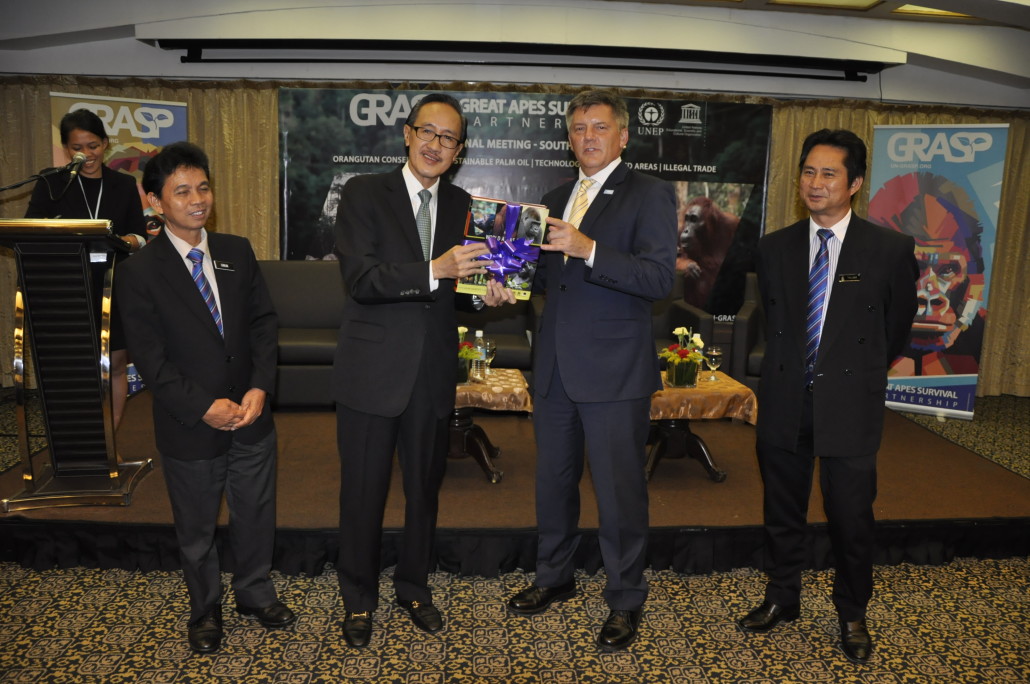All articles of environment in Sabah
28Aug
Pinning hopes on Indons
Kota Kinabalu: Sabah is not losing hope on saving its rhinos and is now banking on Indonesia for a female surrogate to save the animal from extinction.
With no more signs of the animal in the wild – even after years of searching – sadly, illness has also hindered the reproduction of the remaining three Sumatran rhinos in captivity at Lahad Datu.
Less than 100 are believed to be in Kalimatan and Sumatra in Indonesia, and concerns had also been raised whether they would be compatible.
According to Sabah Wildlife Department Assistant Director, Dr Sen Nathan, Sumatran Rhinos in Malaysia and Indonesia are of the same subspecies 'Dicerorhinus Sumatrensis' and hence, "they will be compatible."
This is after scientists have agreed to unanimously manage Sumatran Rhinos as one biological unit due to the lack of their numbers in the wild, he explained.
"Hence, they would be able to breed and produce healthy and reproductively sound progenies," he said.
This will work well with the existing effort, where the Wildlife Department is now working with experts from Germany and the peninsula to carry out Advanced Reproductive Techniques such as 'Intercellular Sperm Insemination' to produce an embryo.
This brings back Malaysia's attention to Indonesia, which according to Wildlife Department Director William Baya, is "the only other place to find a healthy surrogate."
"If we really want to save this rhino from extinction both Malaysia and Indonesia have to work together," he said in a statement, here.
"We here in Sabah and even the Federal government are more than willing to do this for the sake of saving this species," he added.
According to him, the application advance reproduction method is done with the help of a group of experts from the Institute of Zoo and Wildlife, Berlin, Germany, Universiti Putra Malaysia and Mardi, where they are now working at the Agro Biotechnology Institute in Serdang in Selangor to produce the embryo.
And the next step, he said is to find a healthy surrogate mother to be impregnated with the embryo.
Baya said there seemed to be a renewed interest when Malaysia brought the matter up with their Indonesian counterparts in the recent Heart of Borneo (HoB) meet in Sandakan, following an attempt which was marred by bureaucracy.
Tourism, Culture and Environment Minister Datuk Seri Masidi Manjun had recently claimed the survival of the Sumatran Rhinos in Sabah now rests on a government to government level.
Other than the two rhinos caught in 2011 (Puntung) and 2014 (Iman), there have been no more signs of the animal in the wild here – even after years of searching.
Even the three rhinos in captivity are not reproductively sound with the male, Tam, caught in 2008, having very low sperm count.
Puntung, the female that was caught in Tabin in 2012 had multiple ovarian and uterine cysts and the last female rhino, Iman that was captured in Danum Valley had a football sized tumour in her uterus, thus trying to make her pregnant is next to impossible.
In a report under the international-based journal Oryx, scientists wrote that other than two rhinos caught in 2011 and 2014, there had been no more signs of the animal in the wild here.
"As of June 2015, no further signs of the species have been found in Sabah, and it is safe to consider the species extinct in the wild in Malaysia," the report, co-authored by 11 experts worldwide read.
Borneo Rhino Alliance head Dr Junaidi Payne was reported as saying that the Sumatran rhino was doomed by a lack of breeding and that it was hunted by poachers.
He said every rhino still living today had to be closely managed, with a combined effort of regional nations. "We should certainly be thinking of boosting Sumatran rhino numbers through a single programme that is not based on nationalistic thinking," he said.
Dr Payne, who is one of the report's 11 co-authors, is currently working with the Sabah government to make the State's female rhinos pregnant artificially.
He had previously implied that if no rhino embryos could be made by mid-2017, it might become extinct here.
The Sumatran rhino is Malaysia's last surviving rhino species. Its cousin, the Javan rhino, went extinct here after the last of its kind in Malaya was shot in 1932.
Source: Daily Express





